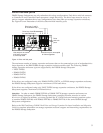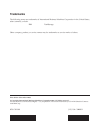
IBM TotalStorage
DS4500 Storage
Subsystem Fibre
Channel Cabling
Guide
Attention
This document contains important changes to the required cabling scheme for connecting storage
expansion enclosures to the IBM
®
TotalStorage
®
DS4500 Storage Subsystem.
The fibre channel cabling instructions in “Drive-side fibre-channel cabling” on page 4 of this
document replace the information provided in the IBM TotalStorage DS4500 Fibre Channel Cabling
Instructions (pn 25R0406) and the IBM TotalStorage DS4500 Installation and Support Guide (pn
25R0402).
Additionally, if you are connecting DS4000 EXP700 or EXP710 storage expansion enclosures to a
DS4500, follow the instructions provided in the this document and not the instructions on drive-side
fibre channel cabling presented in the IBM TotalStorage DS4000 EXP700 and EXP710 Installation,
User’s, and Maintenance Guide.
This document contains information on the following topics:
v “Using IBM SFP modules and IBM fibre channel cables”
v “Direct-attached host-side fibre channel cabling” on page 3
v “Drive-side fibre-channel cabling” on page 4
Using IBM SFP modules and IBM fibre channel cables
The Small Form-Factor Pluggable (SFP) module housing and fibre channel cable have integrated guide
keys that prevent you from inserting these devices incorrectly. You must insert SFP modules into ports
with minimal pressure so that you do not damage either the SFP module or the port. You can insert an
SFP module into an active port without affecting the operational loop performance. You must connect the
fibre channel cable to the SFP module after you insert the SFP module into the port.
Attention: Remove SFP modules from any unused mini hub ports (both host-side and drive-side) on the
DS4500 Storage Subsystem.
To avoid damage to your fibre-optic cables:
v Do not route the cable along a folding cable-management arm.
v For devices on slide rails, leave enough slack in the cable so that it does not bend to a radius less than
38 mm (1.5 in.) when extended or become pinched when retracted.
v Route the cable away from places where it can be damaged by other devices in the rack cabinet.
v Do not use plastic cable ties in place of the provided cable straps.
v Do not overtighten the cable straps or bend the cables to a diameter of less than 76 mm (3 in.), or a
radius less than 38 mm (1.5 in.).
v Do not put excess weight on the cable at the connection point. Be sure that the cable is well supported.


















